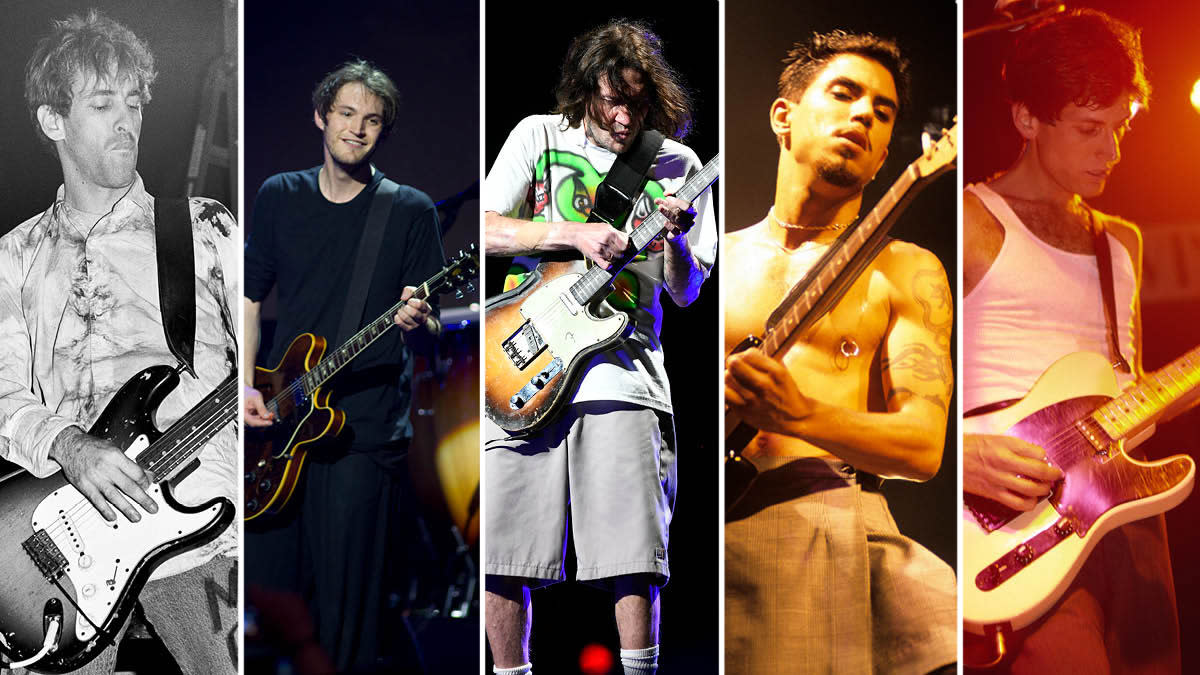Red Hot Chili Peppers survived 5 guitarist swaps, and each one shook up their sound. Here’s how the band’s guitar style evolved with each personnel shift – and what you can learn from them, too

- Oops!Something went wrong.Please try again later.
- Oops!Something went wrong.Please try again later.
- Oops!Something went wrong.Please try again later.
- Oops!Something went wrong.Please try again later.
Lineup changes can signal life or death for a band, but over their four-decade career, the Red Hot Chili Peppers have bounced back from personnel shifts on a few occasions. Numerous guitarists have stepped in throughout the years to tour and record with the band, but what stands out is how each player encompasses the style of their predecessors while introducing elements relevant to current musical trends.
In the ’80s, Jack Sherman and Hillel Slovak established the band’s signature funk-rock styling while reflecting elements of pop. In the ’90s, John Frusciante maintained the ‘funky punk’ vibe while acknowledging grunge, while Dave Navarro forged a straight-ahead rock sound identifying with alt-rock.
Josh Klinghoffer took the reins as a full-time member from 2009 to 2019, maintaining the wide palette of sounds established by his predecessors. Today, the band tour the world with Frusciante once again back in the fold.
Check out our tab examples and backing tracks for an insight into how each of these players has developed the Chili Peppers’ sound.
Example 1. Jack Sherman

One of Jack Sherman’s approaches was to double the bass groove. This adds depth by thickening the arrangement and presents the riff in different registers. Take care with timing by listening to the placement of the bass notes and drum hits that coincide with the guitar phrase.
Example 2. Hillel Slovak

Slovak often presented elements of commercial ’80s pop songs through the use of effects on his guitar sounds. Use heavy compression and reverb to recreate the vibe. Make sure you maintain the tempo after the rests – it’s all too easy to rush into the 16th note sequences.
Example 3. John Frusciante (early era)

During the ’90s, Frusciante introduced a grungy edge by adding intensity to the strumming patterns, often using more drive in the guitar tone and letting some open strings ring against chord changes. Use a decent amount of pick attack and wide strums to emulate the sound.
Example 4. Dave Navarro (Lead)

This example highlights how Navarro would bring his alternative rock flavours to the guitar melodies. This lick uses sliding octaves to imitate Dave’s vocal-like phrasing, establishing a bright sound with a major 3rd (F#) before switching to a minor 3rd (F), which adds a darker and more sinister edge.
Example 5. John Frusciante (second stint)

This sparse rhythm part demonstrates how the band’s songwriting focus took a more commercial direction, often within a melancholy ballad feel. Get the chords to build by letting the notes ring over each other, particularly while the Hendrix-style triplet embellishments take place.
Example 6. Josh Klinghoffer (Rhythm)

An approach that Klinghoffer uses is to create internal melodies around a single chord. In this example, the phrase is based around an Am7, and the chord extension notes around the shape are used to build the melody. Focus on keeping all notes ringing while you manipulate the shape.

